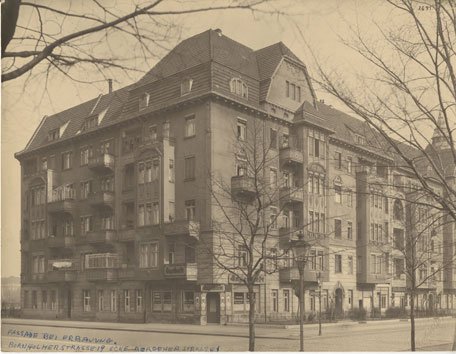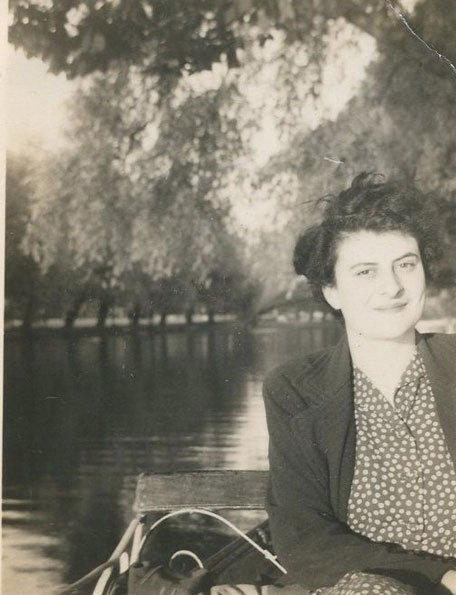On Nov. 9-10, 1938, now memorialized as Kristallnacht or the “Night of Broken Glass,” more than 200 synagogues were destroyed, and 7,500 Jewish businesses were looted throughout Germany and Austria. More than 30,000 Jewish men were sent to concentration camps such as Dachau, Buchenwald and Sachsenhausen.
The Steiner family escaped the violence of this night, but their heirs would spend the next 60 years trying to win restitution for their lost property.
Julianne and Filipp Steiner lived with their daughter and her husband, Lily and Friedrich Bielitz. The Steiner-Bielitz family lived a privileged life in Vienna. They owned a textile house and property in Vienna as well as property in Berlin (Bornholmerstasse 19 and Lessingstasse 20) which the family managed. On Nov. 12, 1938, there was another knock at the door. This time, the two men of the household – Filipp and Friedrich – were taken into custody. They were interviewed by Adolph Eichmann, a prominent Nazi officer who later coordinated the “Final Solution” and then released.
The events of November 1938 frightened the Steiner-Bielitz family. They decided to flee Austria. They fled to England and later to the United States.
Lily arranged for her niece, Hedi Basch, to be a part of the kindertransport, a rescue operation established by the British Jewish Refugee Committee where the British government agreed to place 10,000 Jewish children under Nazi occupation in foster homes. In February 1939, at the age of 14, Hedi immigrated to England. Lily and Friedrich soon followed Hedi to England in August 1939 with Lily’s parents, Julianne and Filipp Steiner.
In 1944, Friedrich Bielitz died in England. After the war, Lily, her parents, Julianne and Filipp Steiner, and niece, Hedi Basch, immigrated to the United States, where their Vienna household belongings and business records had been shipped in 1939.
Once settled in New York, Lily began the process to reclaim the wealth and properties that had been lost. On Feb. 16, 1951, she was awarded the Lessingstasse 20 property and was hopeful to recover the Bornholmerstrasse 19 property, but she died before she could obtain full restitution. Her niece, Hedi, continued to file appeals hoping to reclaim the lost family wealth. She too died before this process was finalized. In April 2009, after years of legal appeals, the Bielitz heirs were awarded a small percentage of the family’s lost wealth through the restitution process.
This exhibit of four documents – the accounting balance sheet for the Bornholmer 19 property; a penalty letter to Bielitz in 1939; an award letter for the Lessingstasse 20 property to Lily Bielitz dated 1951 and an award document for the Bornholmer 19 property to Hedi in 1993 documents the complexities of the restitution process after World War II. Also included are 14 photographs of the property and family members.
The exhibit is based on “The Bielitz Collection” which was donated to the Museum by the Levenback Family in honor of Hedi Basch Levenback.

